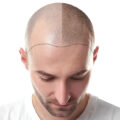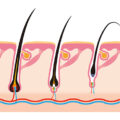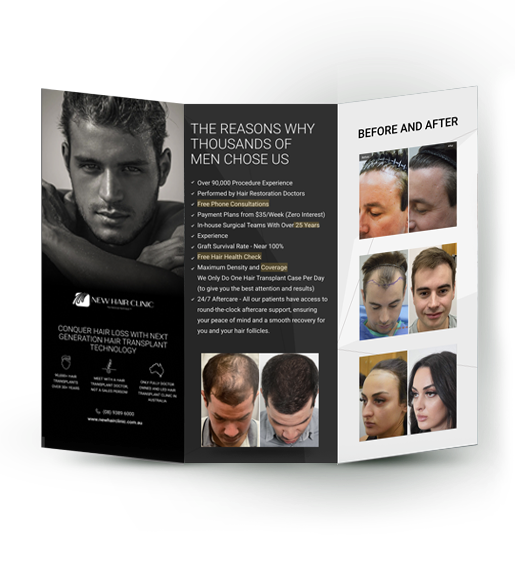Last updated on June 3, 2024
[starbox]
We understand that discussing the causes of thinning hair might not be the most exciting topic right now. However, if you’ve noticed that your hair is thinning, it’s only natural to want to comprehend what might be causing it.
As time advances, almost everyone experiences hair thinning as a result of aging. Hair strands tend to become finer and smaller, lose pigment, and some follicles might cease generating new hairs. For those that persist, the pace of hair growth tends to slow down.
Thinning hair isn’t exclusive to men; women also encounter this issue. Yet, the symptoms and reasons for hair loss might differ between genders. While it’s more common in one’s 40s and 50s, it can manifest at a younger age as well. Thankfully, there are actions you can take, particularly if you address the situation early. Let’s delve into the common indicators, causes, and remedies for thinning hair.
Understanding Thinning Hair and Its Appearance
Firstly, it’s worth noting that everyone sheds hair — usually around 50 to 100 strands per day. So, if you find hair in your shower drain, it’s likely part of the natural shedding process. However, if you notice significant clumps in the drain and on your brush, there might be more to it. When you’re shedding over 100 strands daily, your hair could visibly appear less dense.
Does this imply you’re on the path to baldness? Not necessarily. While it might present as a receding hairline or thinning crown, thinning hair usually happens more evenly across the head. Although, you might encounter patches of thinner hair in specific areas.
Experiencing Thinning Hair at a Young Age – Should You Worry?
Surprisingly, this is more common than one might assume. Some individuals begin to notice thinning hair or hair loss as early as their teenage years. Around 20% of men in Australia experience balding in their 20s, and about 12% of women exhibit signs of female pattern hair loss before turning 30.
The reasons for your early-onset thinning hair could be genetic, or they might originate from different factors. So, what exactly triggers thinning hair at a young age? It could be due to:
- Hormonal fluctuations
- Nutritional deficiencies
- Stress
- Medical conditions (or medication usage)
- Hair and follicle stress from excessive styling
Let’s explore each of these potential causes.
Unveiling the Causes of Hair Thinning
The causes of hair thinning can vary. While aging and genetics contribute to most cases of thinning hair, other factors like hormonal shifts, poor diet, stress, medical conditions, or treatments can also play a role.
Genetic Predisposition (Hereditary Hair Loss)
Primary among the causes of hair thinning is androgenetic alopecia, a genetic condition that initiates thinning at the top of the scalp. This type of hair loss progresses gradually, often taking years to become noticeable, and typically starts between ages 12 and 40.
Nutritional Imbalances
Deficiencies in vital nutrients like iron, zinc, or B vitamins can lead to some degree of hair thinning. Determining whether this is the case can be straightforward – a doctor can conduct a blood test to ascertain nutrient levels.
Underlying Medical
Conditions Thinning hair might be a result of medical conditions that disturb hormone balance (such as pregnancy or menopause) or lead to scalp scarring, or autoimmune reactions. Medical issues that can result in thinning and hair loss include:
- Diabetes
- Lupus
- Hypothyroidism or Hyperthyroidism
- Hodgkin’s Disease
- Hashimoto’s Disease
- Hypopituitarism
- Coeliac Disease
- Ringworm
- Trichorrhexis Invaginata
- Addison’s Disease
- Lichen Planus
- Scleroderma
Medication Usage
While chemotherapy is a well-known treatment associated with hair loss, other medications and treatments list hair loss as a side effect. These include:
- Retinoids
- Beta-blockers
- Calcium channel blockers
- Antidepressants
- Nonsteroidal anti-inflammatory drugs (NSAIDs)
High Stress
Intense and abrupt stress can indeed lead to hair loss, a condition known as telogen effluvium. During times of intense stress, the body may halt hair production along with other processes to cope with the situation. Thinning hair due to stress is usually temporary and tends to resolve over time. You might begin noticing the thinning about three months after the stressful event.
Hairstyles
Believe it or not, certain hairstyles could contribute to hair loss. Traction alopecia is a type of hair loss that occurs in the frontotemporal area due to prolonged and tight styling. Risky styles include tight buns, ponytails, weaves, hair extensions, cornrows, dreadlocks, and the use of styling tools like curling irons and wigs.
Answering Your Thinning Hair Queries
Dealing with thinning hair can indeed raise numerous questions. Here are some commonly asked ones:
Can thinning hair regain its thickness?
The good news is that, in most cases, we can help you restore your thinning hair to a fuller state, especially if you address the issue early.
Is thinning hair the same as hair loss?
While the terms “thinning hair” and “hair loss” are often used interchangeably, there are nuances between them. Thinning hair tends to occur gradually and more uniformly across the head. It can sometimes precede a condition that leads to hair loss, like male or female pattern baldness. Hair loss, on the other hand, can sometimes occur suddenly or more significantly, potentially resulting in baldness.
How can women address thinning hair?
If you notice your hair becoming visibly thinner, there are effective solutions beyond the realm of gimmicky hair products. The optimal approach involves addressing the underlying causes specific to women, such as nutritional deficiencies or the onset of menopause.
Exploring Thinning Hair Solutions
If you’re seeking the right solution for your thinning hair, there’s no need to feel overwhelmed. New Hair Clinic provide a personalised approach to hair loss treatment, book your consult today with our devoted team of Doctor’s.








